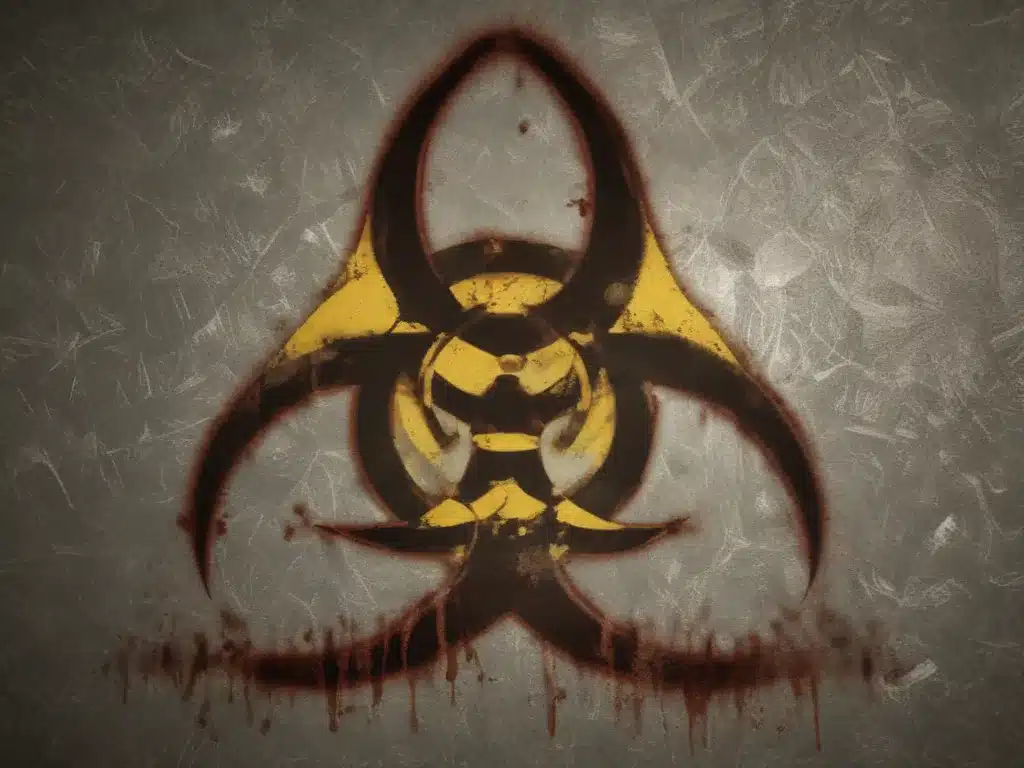Introduction
Biohazards are biological substances that pose a threat to human health and the environment. These hazards can come in various forms, such as viruses, bacteria, fungi, and toxins. Understanding the different levels of biohazards is crucial for ensuring proper safety measures are taken when handling or disposing of these materials. In this article, I will delve into the topic of biohazard levels, exploring their classifications, risks, and the necessary precautions to mitigate potential dangers.
Biohazard Level 1
Biohazard Level 1 is the lowest level of biohazard classification. It involves biological agents that are not known to cause disease in healthy adult humans. These agents typically pose minimal potential hazard to laboratory personnel and the environment. Examples of Biohazard Level 1 agents include non-pathogenic Escherichia coli and Bacillus subtilis.
Safety measures for working with Biohazard Level 1 agents are relatively minimal. Standard microbiological practices and basic biosafety level are generally sufficient. These include good personal hygiene, proper waste disposal, and the use of personal protective equipment (PPE) when necessary.
Biohazard Level 2
Biohazard Level 2 encompasses biological agents that are associated with human disease and pose moderate potential hazard to personnel and the environment. These agents can cause serious or potentially lethal infections if exposed through percutaneous injury, ingestion, or exposure to mucous membranes.
Examples of Biohazard Level 2 agents include Hepatitis B virus, Salmonella, and Toxoplasma gondii. Safety measures for working with these agents involve the use of biosafety cabinets, proper PPE, and strict adherence to standard microbiological practices.
Biohazard Level 3
Biohazard Level 3 encompasses biological agents that can cause serious or potentially life-threatening diseases through inhalation exposure. These agents pose a high risk of aerosol transmission and require stringent containment measures.
Examples of Biohazard Level 3 agents include Mycobacterium tuberculosis, Yellow fever virus, and West Nile virus. Safety measures for working with these agents involve the use of biosafety cabinets, specialized personal protective equipment (PPE), and controlled access to laboratories.
Biohazard Level 4
Biohazard Level 4 is the highest level of biohazard classification. It encompasses biological agents that pose a high risk of life-threatening disease, with no available vaccines or treatments. These agents are easily transmissible through aerosol exposure and require maximum containment measures.
Examples of Biohazard Level 4 agents include Ebola virus, Marburg virus, and Crimean-Congo hemorrhagic fever virus. Safety measures for working with these agents involve the use of maximum containment laboratories, specialized personal protective equipment (PPE), and strict decontamination procedures.
Importance of Proper Biohazard Handling
Proper handling and disposal of biohazardous materials are crucial for protecting human health and the environment. Failure to adhere to the appropriate safety measures can lead to serious consequences, such as exposure to infectious agents, environmental contamination, and legal liabilities.
To ensure the safe handling and disposal of biohazardous materials, it is essential to follow established protocols and regulatory guidelines. These protocols may include the use of specialized equipment, proper labeling, and training for personnel who handle these materials.
Professional Biohazard Cleaning Services
For businesses, healthcare facilities, or any organization dealing with biohazardous materials, it is highly recommended to seek the services of professional biohazard cleaning companies like AdamCleaning.uk. These companies have the expertise, equipment, and resources to safely handle and dispose of biohazardous materials, ensuring compliance with relevant regulations and minimizing potential risks.
Professional biohazard cleaning services can assist with various scenarios, including crime scene cleanup, trauma scene cleanup, blood and bodily fluid remediation, and infectious disease decontamination.
Conclusion
Understanding biohazard levels is crucial for ensuring the safety of individuals, organizations, and the environment. By recognizing the risks associated with each level and implementing appropriate safety measures, we can mitigate the potential dangers posed by biohazardous materials. Whether you are a researcher, healthcare professional, or a business owner, seeking the assistance of professional biohazard cleaning services like AdamCleaning.uk can provide peace of mind and ensure compliance with relevant regulations.







